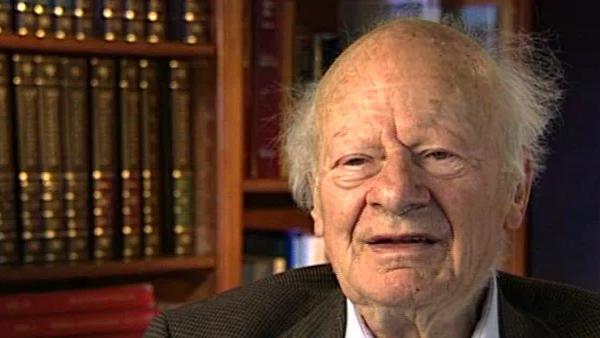NEXT STORY

Members of the Cornell Laboratory of Nuclear Studies
RELATED STORIES

NEXT STORY

Members of the Cornell Laboratory of Nuclear Studies
RELATED STORIES


|
Views | Duration | |
|---|---|---|---|
| 111. CF Powell and the pi meson | 458 | 04:06 | |
| 112. Members of the Cornell Laboratory of Nuclear Studies | 375 | 01:27 | |
| 113. Resonance for neutral pi mesons | 370 | 01:47 | |
| 114. Hoping high energy physics would be the key to nuclear forces | 453 | 02:11 | |
| 115. Work on low energy systems | 391 | 03:56 | |
| 116. The Bethe-Salpeter equation | 541 | 04:23 | |
| 117. Robert Wilson creates the Fermilab | 549 | 01:58 | |
| 118. People moving in and out of the Cornell physics lab | 829 | 02:36 | |
| 119. Kinoshita's work on the extra magnetic moment of the electron | 493 | 02:47 | |
| 120. Nobel prize winners here at Cornell | 603 | 02:16 |


Just a couple of month after the Shelter Island conference, came news from England, from Bristol. Powell and several collaborators had exposed photographic plates high in the atmosphere, carried by balloons, had exposed photographic plates and looked at the result. And it turned out that you could see that some particle was formed in the photographic plate, it went a certain distance, and then there was a kink, apparently a new particle started out. And both of these particles from the count of... of exposed silver grains, both of these particles had a mass less than the mass of a proton, and much greater than the mass of the electron. Obviously the first particle having a higher mass than the second one, because the first particle apparently came to a stop at one point, and then the second particle was emitted. So the... the group of Powell and collaborators had concluded that there were indeed two mesons, one which they called the Primary Meson, which they called pi, and stopping and giving rise to a secondary meson which they called µ for meson. So just about when Marshak's idea was conceived, it was proved correct by these experiments in Bristol by Powell and collaborators.
[Q] And mesons become an important part of your life.
Mesons became a very important part of my life. I've thought now we have the theory of quantum electrodynamics, there should be a similar theory for the nuclear force. It should also be renormalized, which would remove the infinities, and then we would have from the idea of the Powell Meson, the pi Meson, which could be 'primary' or 'Powell', the interaction of the p meson with the nucleon was obviously transmitting the nuclear force and we should be able to... to treat that nuclear force with the new methods of renormalized quantum field theory. And so I... had the idea that we should have a real effort here at Cornell in which many people were engaged, Dyson and Dalitz, one of... of Peierls' PhDs, and I believe Salpeter.
The late German-American physicist Hans Bethe once described himself as the H-bomb's midwife. He left Nazi Germany in 1933, after which he helped develop the first atomic bomb, won the Nobel Prize in Physics in 1967 for his contribution to the theory of nuclear reactions, advocated tighter controls over nuclear weapons and campaigned vigorously for the peaceful use of nuclear energy.
Title: CF Powell and the pi meson
Listeners: Sam Schweber
Silvan Sam Schweber is the Koret Professor of the History of Ideas and Professor of Physics at Brandeis University, and a Faculty Associate in the Department of the History of Science at Harvard University. He is the author of a history of the development of quantum electro mechanics, "QED and the men who made it", and has recently completed a biography of Hans Bethe and the history of nuclear weapons development, "In the Shadow of the Bomb: Oppenheimer, Bethe, and the Moral Responsibility of the Scientist" (Princeton University Press, 2000).
Tags: Cornell University, CF Powell, Robert Marshak, Freeman Dyson, Richard Dalitz, Edwin Salpeter, Rudolf Peierls
Duration: 4 minutes, 7 seconds
Date story recorded: December 1996
Date story went live: 24 January 2008